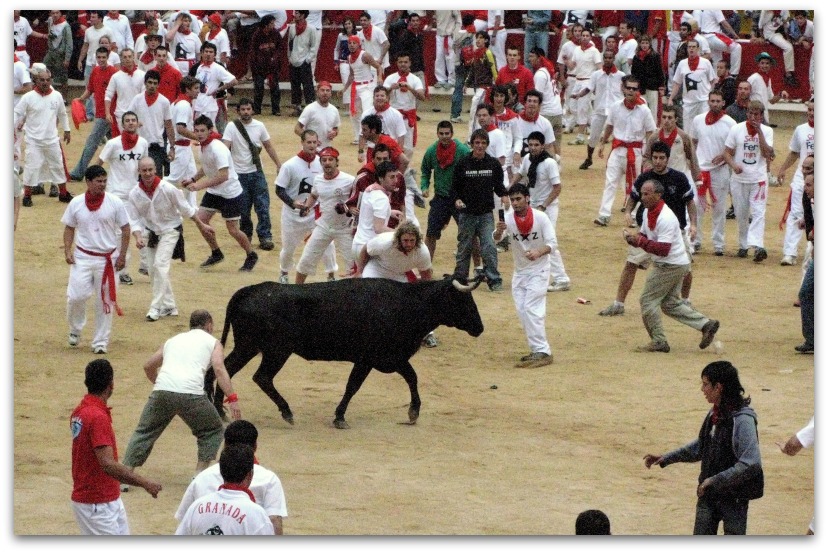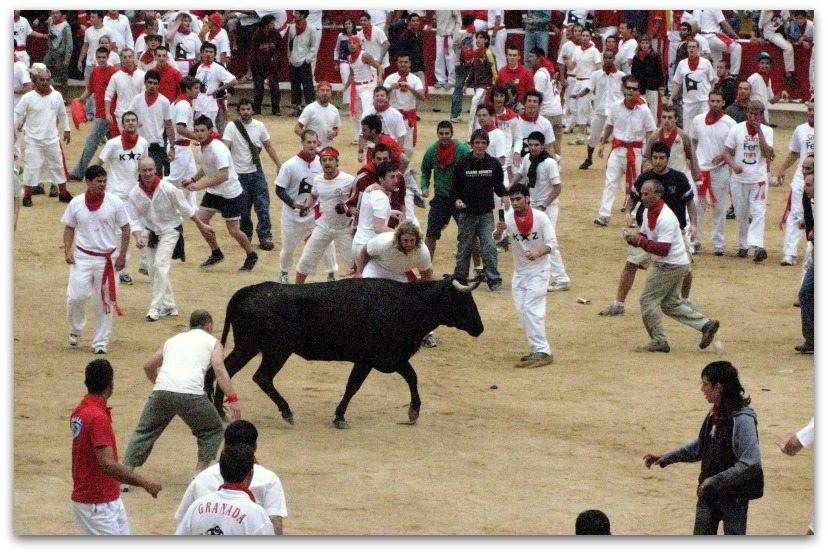It’s one of the world’s craziest, and most dangerous, annual spectacles. Here are a few quick facts about this strange Spanish event.
Several world cities host bull runs, but the most famous takes place every summer in Pamplona, Spain, as part of the city’s San Fermín Festival. The eight-day event, which honors the patron saint of the surrounding region, begins at the stroke of midnight on July 6th. Locals love the parades, fireworks, and El Struendo (“The Roar”), in which everyone screams at the top of their lungs while playing a musical instrument.
However, the encierro —“The Running of the Bulls” is what draws international visitors to the city. According to one source, the annual run was inspired by young daredevils who used to jump in front of bulls as they were being corralled through the streets of Pamplona and into the city’s bullring. Others say that the tradition dates back to the 14th century and involved pedestrians in northeast Spain running away from bulls while they were being led toward a market.
The first run is held at 8 a.m. on the morning of July 7, with additional runs taking places every morning of the festival thereafter. Among the minimal rules: Runners must be over the age of 18, can’t antagonize the bulls, can’t run toward the bulls, and can’t be drunk. (Many opt to wear the traditional outfit of white pants, white shirt, red belt, and neckerchief.
The 903-yard course features six bulls and stretches from a corral to a bullring through Pamplona’s oldest district. Wooden barriers are set up along the route to protect spectators and contain gaps just wide enough for participants to escape through if a bull gets too close. Organizers fire off rockets to let everyone know when the bulls have been released. A final rocket announces the arrival of the bulls in the ring.
How long does the average encierro last? A mere four minutes. A lot can happen in that amount of time though. On average, between 200 and 300 people are injured during the fest’s bull-related events. Most are caused by trips and falls. Goring doesn’t happen often, but the bulls have managed to kill 15 people since officials began keeping records in 1910—13 of those deaths came in 1977 while a man was crushed to death by the bulls.
To keep up with all of the inevitable injuries, 200 volunteers and medical professionals are on site to treat participants. They’re stationed at 16 posts along the route, one every 50 yards.









